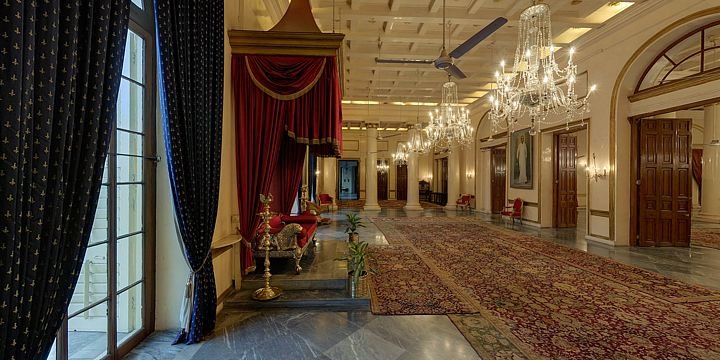Iconic Throne Room at Raj Bhavan in Kolkata Named After Sardar Patel
In a significant move that resonates with historical pride, the iconic Throne Room at Raj Bhavan in Kolkata, West Bengal, has been officially named after the Iron Man of India, Sardar Vallabhbhai Patel. This decision has profound implications, not only in honoring one of the chief architects of modern India but also in commemorating his legacy in a state that has a rich tapestry of historical significance. Let’s delve deeper into why this news is important and its historical context.

Why This News is Important
Honoring a Visionary Leader
The decision to name the Throne Room after Sardar Patel pays homage to a visionary leader who played a pivotal role in integrating the princely states into the newly independent India. His unwavering commitment to national unity and integrity makes this a fitting tribute.
Celebrating Unity in Diversity
Kolkata, often referred to as the cultural capital of India, serves as a symbol of India’s diverse culture and heritage. By dedicating the Throne Room to Sardar Patel, the city celebrates the idea of ‘Unity in Diversity,’ which has been the essence of India’s nationhood.
Historical Context
The iconic Throne Room at Raj Bhavan holds a unique historical significance. It was built during the British colonial era and was used for various official and ceremonial purposes. After India gained independence, Raj Bhavan continued to be a place of historical importance. By naming the Throne Room after Sardar Vallabhbhai Patel, the government of West Bengal acknowledges the role of this towering figure in shaping the destiny of a united India.
Key Takeaways from “Iconic Throne Room at Raj Bhavan Named After Sardar Patel”
| Serial Number | Key Takeaway |
|---|---|
| 1 | The Throne Room at Raj Bhavan in Kolkata has been named after Sardar Vallabhbhai Patel, commemorating his contributions to India. |
| 2 | This decision reflects a celebration of unity in diversity and the historical significance of Kolkata. |
| 3 | It serves as an inspiration for civil service aspirants to make a positive impact on the nation. |
| 4 | The Throne Room, built during the British era, holds historical importance and continues to play a significant role today. |
| 5 | The naming of this iconic room strengthens cultural ties and fosters a sense of national pride. |
Important FAQs for Students from this News
Q: Why was the Throne Room at Raj Bhavan in Kolkata named after Sardar Patel?
A: The Throne Room was named after Sardar Vallabhbhai Patel to honor his significant role in integrating the princely states into the newly independent India.
Q: How does this decision reflect the idea of ‘Unity in Diversity’?
A: By naming the Throne Room after Sardar Patel, it celebrates the cultural diversity of India and signifies the importance of unity in a multicultural nation.
Q: Why is this news important for civil service aspirants?
A: This news serves as an inspiration for civil service aspirants, highlighting the positive impact that leaders like Sardar Patel can have on the nation.
Q: What is the historical significance of the Throne Room at Raj Bhavan?
A: The Throne Room, built during the British colonial era, has been a place of historical importance and continues to play a significant role today.
Q: How does this decision strengthen cultural ties?
A: Naming the iconic room in Kolkata after Sardar Patel fosters a sense of national pride and strengthens cultural ties between different regions of India.
Some Important Current Affairs Links

















 Exciting News!
Exciting News!  Join Our Telegram Channel Now!
Join Our Telegram Channel Now!
 Join our Telegram channel for a thrilling adventure into the world of daily current affairs.
Join our Telegram channel for a thrilling adventure into the world of daily current affairs. 
 Don’t miss out on the latest updates and insights! Click to join now and be part of the knowledge revolution!
Don’t miss out on the latest updates and insights! Click to join now and be part of the knowledge revolution! 
